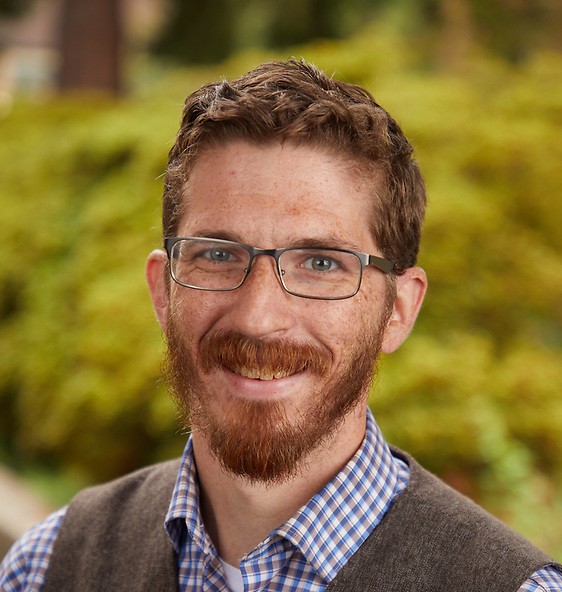Page 86 • (3,476 results in 0.034 seconds)
-
countries where they are located. Science makes lofty claims that it is an objective mode of inquiry. In other words, science claims that the analysis and interpretation of data (in this case, bones, stones, and pottery, etc.) is carried out free of bias. This course will take care to evaluate this proposition. This course may substitute for ANTH 103 under special circumstances with consent of department chair. (4) ANTH 287 : Special Topics in Anthropology To provide undergraduate students with new, one
-
professional association for the multidisciplinary understanding of families, with a membership of more than 3400 family researchers, practitioners and educators. During the selection process, the committee noted the following strengths of the article: The choose of data collection procedures was particularly attuned with the unique aspects of exploring the experiences of military wives. The depth and clarity of the discussion of the procedures was particularly notable. Committee members were especially
-
spectral data for 7, increasing the amount of information known about outer-Galaxy star formation. 2:45pm Jason Willis – “Investigation of depth to diameter ratio of selected craters on Mercury” Topographic data measured from the Mercury Dual Imaging System (MDIS) aboard the MESSENGER spacecraft was used to investigate the relationship between depth and diameter for simple impact craters on Mercury. 3:00pm Christiaan Chandler – “Building a Self-Balancing Robot” A two-wheeled self balancing robot
-

Nick Paterno Resident Instructor of Mathematics he/him/his Phone: 253-535-8169 Email: paternnj@plu.edu Office Location: Morken Center for Learning & Technology - 261 Curriculum Vitae: View my CV Professional Additional Titles/Roles Data Management Lead @ OpenIntro Fellow @ OpenIntro Education MS, Mathematics, Portland State University, 2011 BS, Mathematics, University of Montana, 2009 Areas of Emphasis or Expertise Introductory Statistics Statistical Computing Selected Presentations Cascadia R
-
To increase employee’s safety and health awareness, bulletin boards for safety information are located in several buildings on campus. The safety bulletin boards in the following areas will display all Washington Industrial Safety and Health Act (WISHA) required posters and emergency information: Hauge Administration Building Dining and Culinary Services Facilities Management Safety bulletin boards in other areas may display safety posters, emergency numbers, Material Safety Data Sheet (MSDS
-

Nick Sherwin Prospect Information Manager Phone: 253-535-8229 Email: sherwina@plu.edu Office Location:Martin J. Neeb Center Professional Biography Education B.A., Theatre, Pacific Lutheran University, 2019 A.A., Tacoma Community College, 2017 Areas of Emphasis or Expertise Data Entry Gift Processing Gift Receipting Online Giving Customer Service Biography Nick graduated from Pacific Lutheran University in 2019 with a Bachelor of Arts in Theatre. He began his career at PLU as Gift Processing
Area of Emphasis/Expertise -
proposed sulfide-ore mining projects and their potential effects on nearby protected ecosystems and the culturally significant wild rice offer key insight into this phenomenon. I argue that by analyzing the ways in which various stakeholders use (or ignore) scientific data to further their own interests, we can better understand how to mitigate the public’s misunderstanding or misinterpretation of science, and thus enact conservation measures. Layne Perkins I would like to thank my mentors, Dr. Shannon
-
at the research site (e.g., hospital or health care agency).What is QI?QI generally refers to a range of activities used to assess, analyze, critique, and improve current processes of health care delivery in an institutional setting. QI activities are typically observational and unobtrusive and can involve the collection and analysis of data to which investigators have legitimate access through their institutional roles. These activities do not prevent or hinder delivery of clinically-indicated
-
research site (e.g., hospital or health care agency).What is QI?QI generally refers to a range of activities used to assess, analyze, critique, and improve current processes of health care delivery in an institutional setting. QI activities are typically observational and unobtrusive and can involve the collection and analysis of data to which investigators have legitimate access through their institutional roles. These activities do not prevent or hinder delivery of clinically-indicated care to
-
research site (e.g., hospital).What is QI?QI generally refers to a range of activities used to assess, analyze, critique, and improve current processes of health care delivery in an institutional setting. QI activities are typically observational and unobtrusive and can involve the collection and analysis of data to which investigators have legitimate access through their institutional roles. These activities do not prevent or hinder delivery of clinically-indicated care to patients, nor do they impose
Do you have any feedback for us? If so, feel free to use our Feedback Form.


